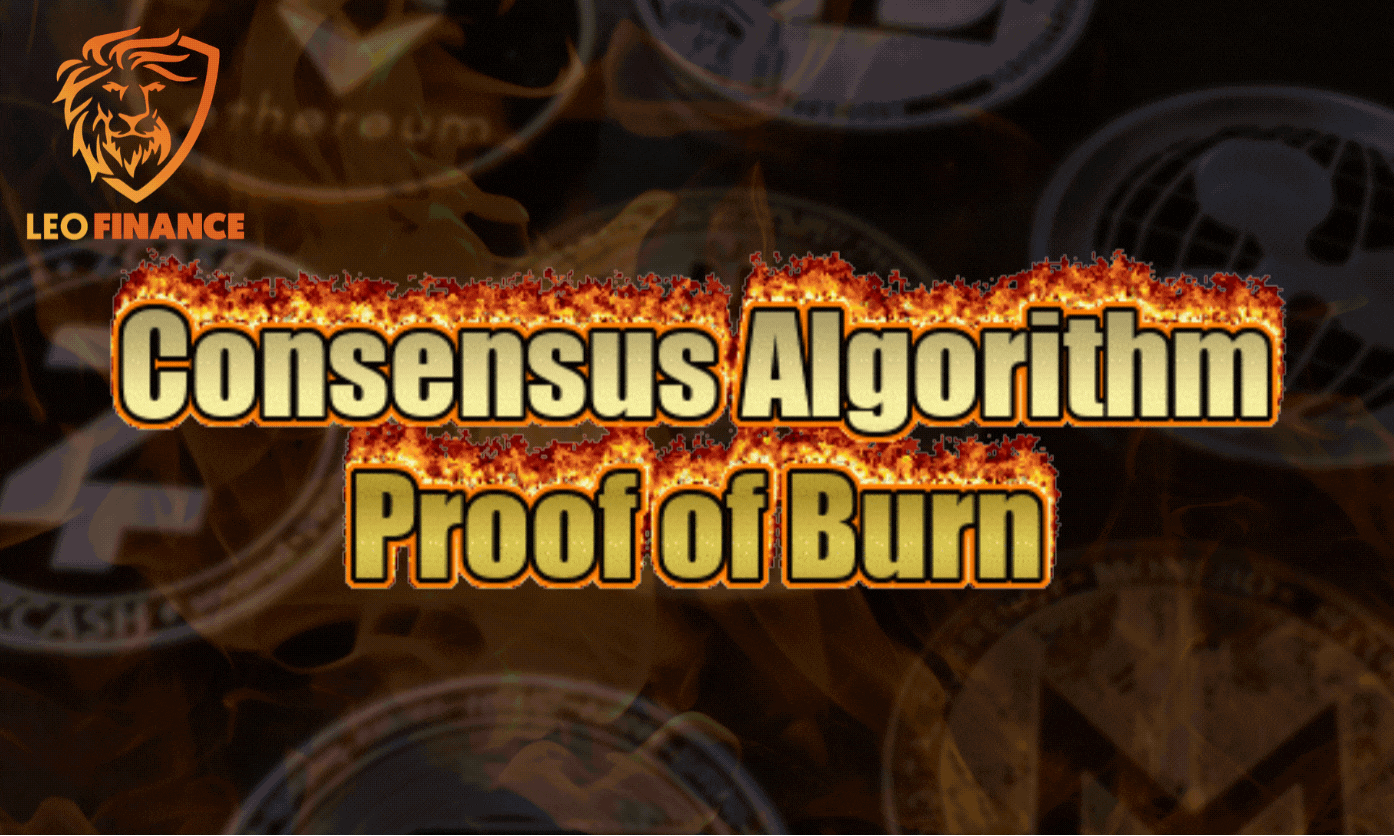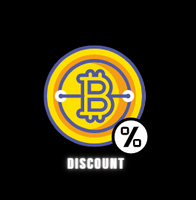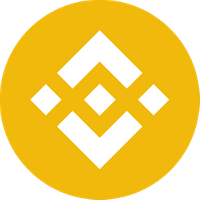
Cover created in Canva
For some time I have been studying the different consensus algorithms that exist, so, in my research I found one of the most interesting consensus algorithms that I have seen, it is about Proof Of Burn (PoB), so, in this publication I will explain in detail and in depth what this algorithm is about, how it works and what economic and potential benefits can be obtained with it.


Image Google Source

The Proof of Burn saw its birth in 2012, when a geologist named Iain Stewart taught a very novel idea about a mining protocol that, bases its activity mainly on burning Cryptocurrencies and/or tokens on the network, but:
What exactly does this protocol refer to by burning tokens or what does it mean?
It is very simple, as many of you know, in consensus protocols such as "Proof of Work PoW", very expensive equipment is needed, in order for these to use high computational power to extract and verify as many blocks in the network, in short, the more computational power one has, the more likely a miner will be able to verify a block and, therefore, get the best rewards for this work. In the "Proof of Burn (PoB)", you don't need such computational power and energy consumption, in order to have the highest odds on your side, in order to verify a block and get the highest rewards, simply, you must burn as many available cryptocurrencies and/or tokens as possible, in order to increase your chances of being a miner, in that sense, the more cryptocurrencies you burn, the more rewards you can get for verifying these blocks on the network.


In order to become a miner under the "Proof of Burn" consensus algorithm, these people and/or investors who are supporting this project, only need to send a certain value in cryptocurrencies and/or tokens to a wallet called "Eater Addresses", these addresses are 100% verifiable, which symbolizes that they are public and anyone can verify what amount has been burned, based on this, the money that is sent to these wallet addresses do not have a private key, and cannot be recovered, for this reason this algorithm is called "Proof of Burn".
Many investors who do not know this protocol, may see this action as a loss of money, however, it is a mistake, since, investors and/or miners who burn assets in a project under this consensus, do it as an investment and their return will come through the increase of possibilities of mining a block, in order to obtain the highest rewards. It is natural that the more time passes and the more the project has solid foundations, the faster the investment will be recovered and profits will be obtained.


First I will make a comparison on the similarities of the Proof of Burn (PoB) with the proof of work (PoW), then I will do the same, but, this time with the Proof of participation (PoS).
Proof of Burn (PoB) Vs Proof of work (PoW)
| (PoB) | (PoW) |
|---|---|
| Is realized investment is made in Cryptocurrencies to burn them and verify a block | Is realized investment is made in expensive mining equipment, to verify a block. |
| Block rewards are provided to each miner who burns his coins. | Block rewards are provided to each miner who uses his computing power. |
| The network is secure because of the investment made through the burned coins which decentralizes the network. | The network is secure because of the resources miners need to verify a block and decentralize the network. |
Proof of Burn (PoB) Vs Proof of Participation (PoS)
| PoB | PoS |
|---|---|
| Is realized investment is made in Cryptocurrencies to burn them and verify a block. | Is realized investment is made in Cryptocurrencies to block them in a wallet to verify a block. |
| Block rewards are provided to each miner who burns his coins. | Block rewards are provided to each miner who has his coins locked. |
| The network is secure because of the investment made through the burned coins which decentralizes the network. | The network is secure because of the investment made through more blocked currencies that decentralize the network. |


The intrinsic characteristics that this PoB consensus algorithm has, in my opinion, make it a better way to contribute to any network, without the need to spend thousands of dollars, in order to buy expensive devices that allow you to mine cryptocurrencies, also this brings other unplanned expenses, such as electricity, compared to the Proof of Burn (PoB). (PoB) significantly reduces the electricity consumption caused by these expensive machines, in this sense, we will save much more and we will be able to contribute to the network in a healthier way and without harming the environment with a large energy consumption.
Another important aspect worth highlighting is that this protocol allows the participation of investors to be even more decentralized and in a certain way impartial, for all those who want to support a network under PoB. You will probably say that whoever has more money, of course will earn much more, as their chances will increase, this is true, but there is an important difference; and is that the money burned can not be recovered in any way, something that does not happen with the Proof of Stake or PoS.
Last but not least, this algorithm also does an excellent job of preventing a 51% attack on the network. This is because it is not attractive for any investor to have to burn a large amount of coins that would allow him to completely control the network, because it basically forces all participants to have a fairer and more committed approach to the project.


Image Google Source

Coin Blocking
Coin blocking prevents coins from being sold and helps the entire network and interested investors to eliminate all the supply that may occur in the market, in short, it is a control mechanism against inflation that may occur due to excessive issuance of cryptocurrencies and/or tokens in the network.

Cover created in Canva

The burning of coins at a discount
Burning coins that are very cheap can represent a very good advantage in the project, as long as the foundations of the project are very solid and the team behind it is very committed to both the network and the participants. In this sense, the cheaper the coins are, the greater the opportunity to continue burning much more as opposed to if this were very expensive, not all participants would be able to burn a larger amount of these.

Image Google Source

Long-term investments
The miners who are willing to burn their coins in this consensus algorithm, mean that they will spend at that moment a certain amount of coins, however, in the medium and long term, the motivation of the miners is to recover the money invested in the burning, in addition to this, the operation of the network, makes each participant commit to the same, in order to be able to recover their investment and obtain profits.


| Advantages | Disadvantages |
|---|---|
| The energy used is minimal compared to other protocols. | The block verification process is slower compared to other protocols such as PoW. |
| Token prices under PoB are relatively stable due to the commitment made by investors. | The user without much technical knowledge, the process of burning coins is not transparent to them, because of the same difficulty of verifying these wallets. |
| Investment in expensive equipment is not required, a well-resourced desktop computer is sufficient. | It is a risky investment, as any cryptocurrency burned in the project for the purpose of earning rewards cannot be recovered. |
| There is stability and security in the network under this consensus protocol. | Burned tokens that come from other currencies with a different consensus protocol also damage the environment and consume a lot of energy. |
| Fairer distribution of rewards | - |
| Centralization does not exist, as PoB offers a fair balance between project stakeholders. | - |


There are projects that use this Proof-of-Burn consensus algorithm, to secure their network and also offer sustainable economics to their infrastructure and native currency. Below, I will describe some of the most important projects that use PoB in their system:
Image Google Source

Slimcoin (SLM)
This is the most relevant project I managed to find that, uses as its main consensus algorithm PoB for mining, however, it uses in combination with PoB also Proof of Work PoW and Proof of Stake PoS, in order to make its network much more secure. Based on this, this project offers per block mining rewards using PoB AND PoW. Of course, this has its implications on the network and that is that, the more time passes the difficulty in PoW increases, so those interested in the network, resort to burning many more coins to continue increasing their mining rewards per block.

Image Google Source

Counterparty (XCP)
This project also uses the PoB protocol for block mining. It is also based on the Bitcoin blockchain, where new tokens can be created. It works in a way that investors burn Bitcoin, in order to obtain XCP tokens to be able to use its platform.

Image Google Source

Factom (FCT)
This is another quite interesting project, it uses the PoB consensus protocol, but in addition, it combines it with a process called "Burn and mint". This algorithm bases the FCT economy by creating new coins, however, as more coins are created more are burned simultaneously, which causes the more the network grows the faster it does, this being a system to control the inflation of the token and in turn eliminating the supply of coins.

Image Google Source

Binance Coin
BNB is the native coin of Binance and although it is not directly based with the PoB consensus protocol, it performs a quarterly token burning that is done automatically thanks to a smart contract operating in its blockchain, something very good for this, since, as I already commented it is a mechanism that controls the inflation of this, causing that over time the coin is revalued.


I can conclude that the "Proof-of-Burn PoB" protocol is very important to control a project that bases its mining on it, as well as the other algorithms that exist, since without them it would be impossible for Blockchain networks to be decentralized. . Added to this, as I already commented, I learned a lot about these algorithms, but one of the ones I liked the most was undoubtedly PoB, as it manages to control in a very efficient way the inflation of the asset, which consequently brings the cryptocurrency and / or token to revalue.
To all of you thank you very much for your attention.

Join the official community here Discord
Posted Using LeoFinance Beta
Your content has been voted as a part of Encouragement program. Keep up the good work!
Use Ecency daily to boost your growth on platform!
Support Ecency
Vote for Proposal
Delegate HP and earn more
Thank you.
Posted Using LeoFinance Beta
@tipu curate 2
Upvoted 👌 (Mana: 0/22) Liquid rewards.
We have often known that burning tokens is a good initiative as it guarantees more profit as you mentioned
Few weeks ago, we had this discussion in the POB community and we were considering if we should burn our tokens or not, since, we are still a baby platform and token as well
A lot of people gave their opinion, and in the end, we left it to different investors to do as they deem fit for the good of POB
But I have a question;
Who gets the reward when individuals burn their tokens on the
POB platform, the way @madstacks does on a daily basis?
Also, how did you come up with the fire graphics on your pictures? I would love to recreate that.... Thanks